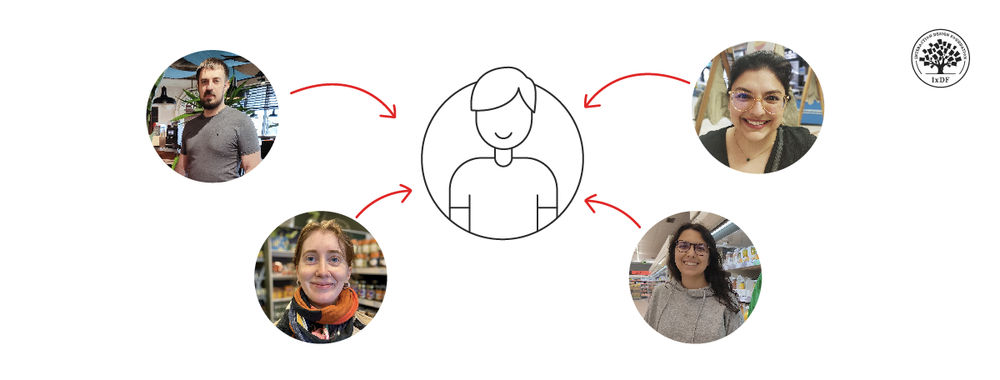There is often a temptation to provide users with a number of options all at once, but research suggests that the number of possible selections can slow users down. This problem was identified by British Psychologists William Hick and Ray Hyman in 1951, after carrying out a series of experiments to assess cognitive information capacity.
The Hick-Hyman Law has been applied in human-computer interaction to highlight the importance of reducing the number of possible choices presented to users at any one time. It suggests there is a linear relationship between the number of options presented and subsequent choice reaction times. So selection speed would be slower with every extra item.
Although established long before the first graphical user interface (GUI) was produced, Hick's law has been applied to the design of websites and other types of UIs. As designers must ensure users are able to identify their target and make the necessary selection with the smallest possible delay, Hick’s law offers a simple and immediate way of assessing displays.

Author/Copyright holder: North Face. Copyright terms and licence: All rights reserved Img source
Critique
The applicability of Hick's law to UI design has been called into question, as users will often employ scanning strategies – when the user interface design supports them – that enable non-linear searching. For example, alphabetically ordered items allow users to focus on a specific portion of a list or to navigate directly to a point near to their target. Likewise, items in numerical order afford the same time-saving strategy.
Hick's law is perhaps at its most robust when applied to random searching in lists where the user cannot employ a search strategy that allows them to focus on an isolated region of all available options. While this may be the case, the arrangement need not be randomly ordered to induce slower reaction times if the viewer employs a sequential viewing strategy.
Consider a new site visitor unaware of all the available categories of items; these categories may be arranged in a logical order (such as according to the most visited/popular pages), but as the user has no experience of the underlying purpose of arranging items in such a way or where individual items are located they could start scanning from any point within the menu or list. This starting point would then determine the length of time taken to reach the target item if a sequential scanning strategy were employed.
Therefore, an increasing number of intervening items would produce a near linear increase in the amount of time the user would have to spend trying to locate their desired option. Furthermore, new users might be more likely to utilize a time-consuming sequential search strategy as they are unable to use experience as a means of directing their attention to an approximate region containing their target item.

Author/Copyright holder: Teach Pe. Copyright terms and licence: All rights reserved Img source
Hick's Law: Experimental Evidence
The effect of alternative options on selection speed can also be seen in memory studies. For example, Saul Sternberg (1969) aimed to see the effect of set size (number of items) on response times in a free-recall test.In the initial phase, subjects were shown a list of digits, ranging in length from 2-6 items. They were then presented with a target (single digit) and asked to respond as quickly as possible whether the target was in the previous list of digits or not. Results showed a near linear relationship between the time taken to recognise targets - or reject a non-present digit - and list length. With every extra digit, judgement time increased by an average of 0.38 milliseconds.
Therefore, recall time was negatively affected by the number of alternative options (non-target items) present in the initial list. Extrapolating these findings to human-computer interaction, one could assume a user, familiar with an arrangement of options (e.g. in a dropdown menu), could take longer to recall the location of their desired option/item as the number of distracting non-targets increases. This is especially true of graphical user interface designs where the user is forced to recall the location of a target without some prompt or visual cue, like using different colours for distinct groups of items.
You may now be wondering why the relevance of Hick's Law to user interface design has been called into question, given that there are a number of instances where the effect of alternative choices on target selection speed seems incontrovertible. Seow (2005) provides a satisfactory explanation for the limited application of Hick's Law to human-computer interaction (HCI):
"This is likely due to the relatively more complex stimuli in HCI. Additionally, an inability to account for performance in a highly familiar automated or trained task may have also limited the law's applicability to HCI problems.Nevertheless, within limits, the relationship between information load and choice reaction-time captured by the Hick-Hyman Law is robust and demonstrable at the base level"
The Current Standing of Hick's Law in Design
Though the applicability of Hick's Law to HCI and user interface design is somewhat limited, this must not mean the effect of alternative options on target selection is entirely overlooked. Furthermore, as previously stated, Hick's Law is most apparent when users are faced with lists of randomly arranged options/items, emphasising the importance of logical order and structure that is instantly perceptible. Whether items are arranged in alphabetical or numerical order, distinguished by some pre-attentive attribute, such as colour, spatial location or size, it is essential to design the user interface to help the user make their selections as quickly as possible and this is progressively more important as the number of alternative options increases.
Header Image: Author/Copyright holder: Daily Mail. Copyright terms and licence: All rights reserved. Img












